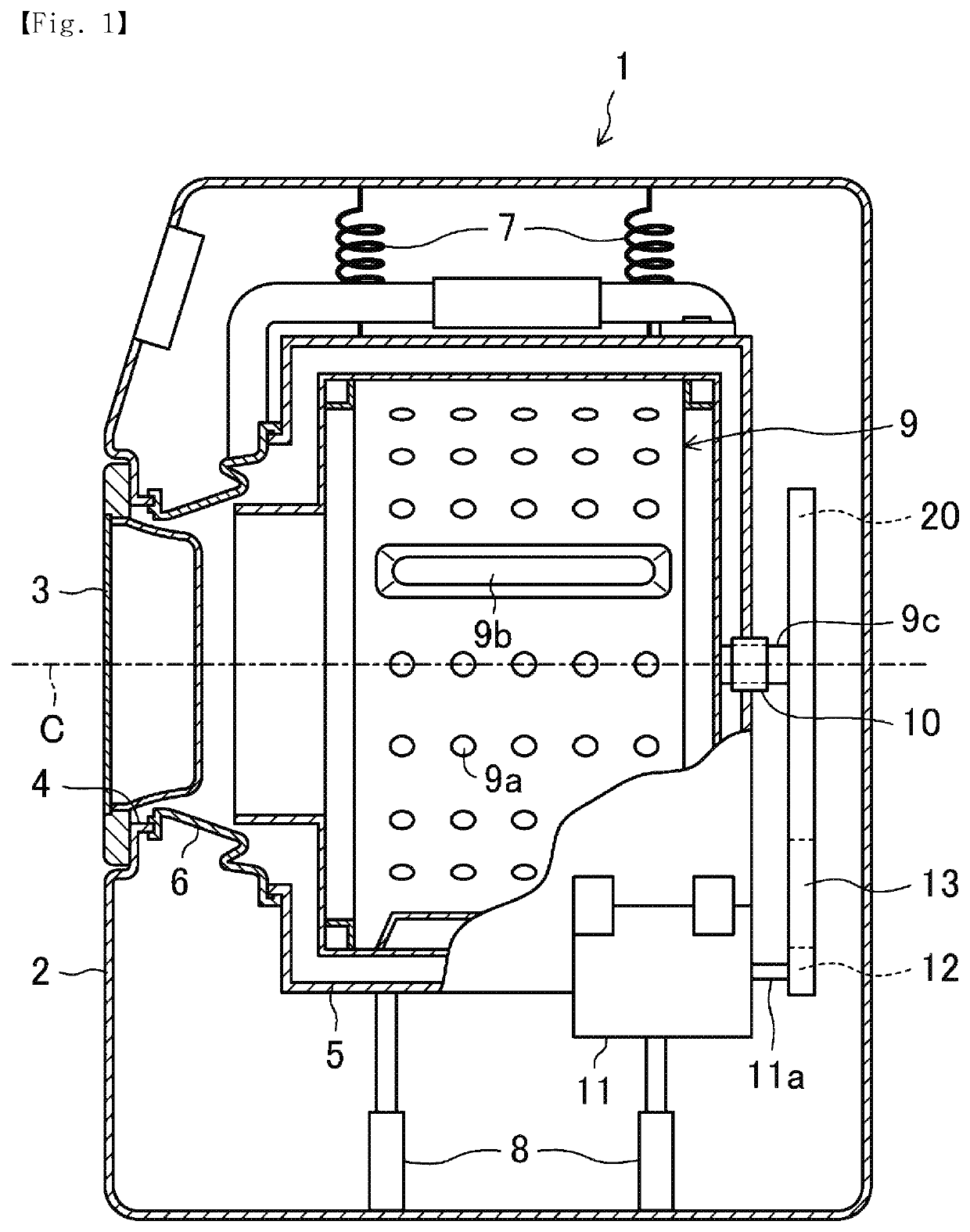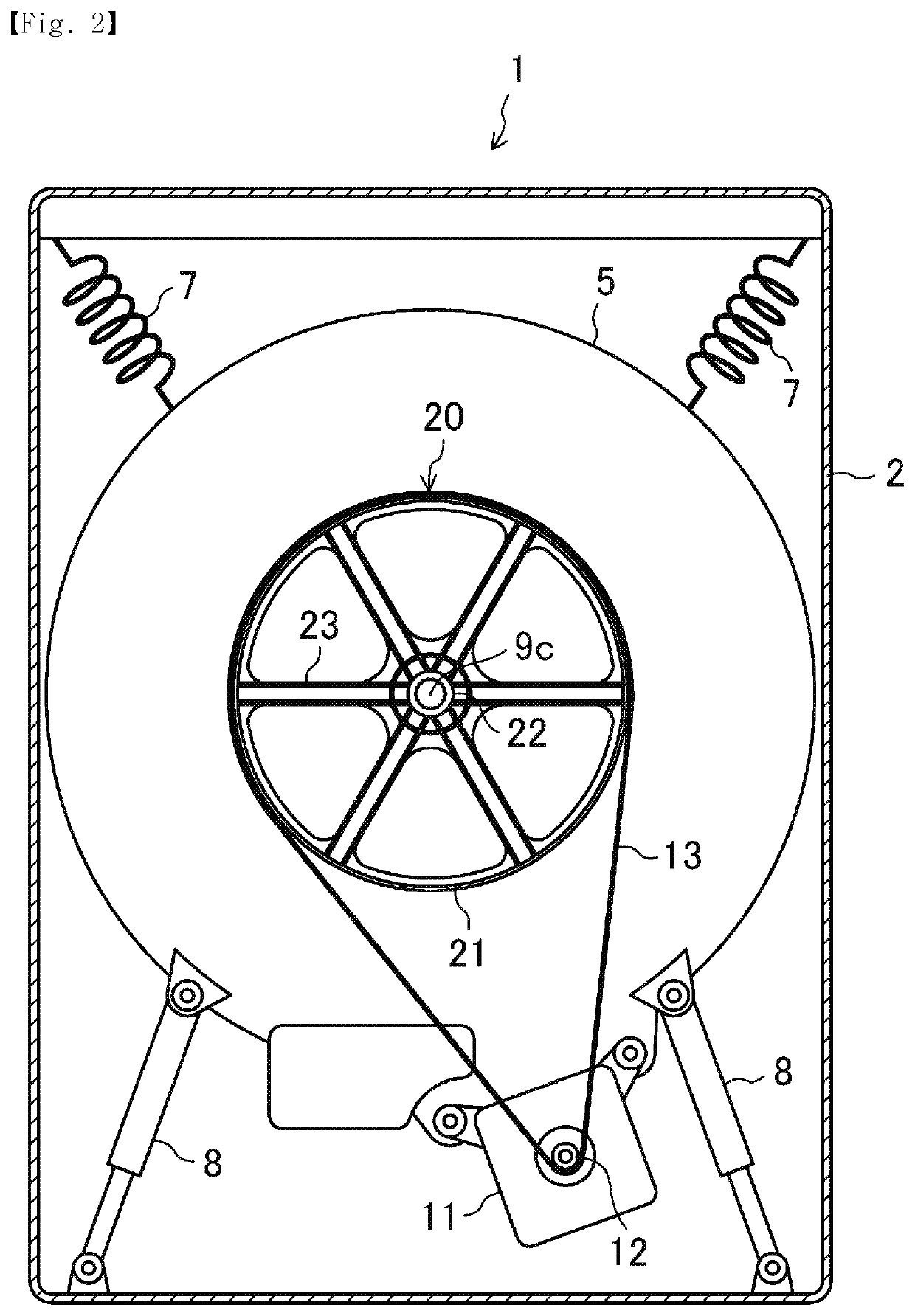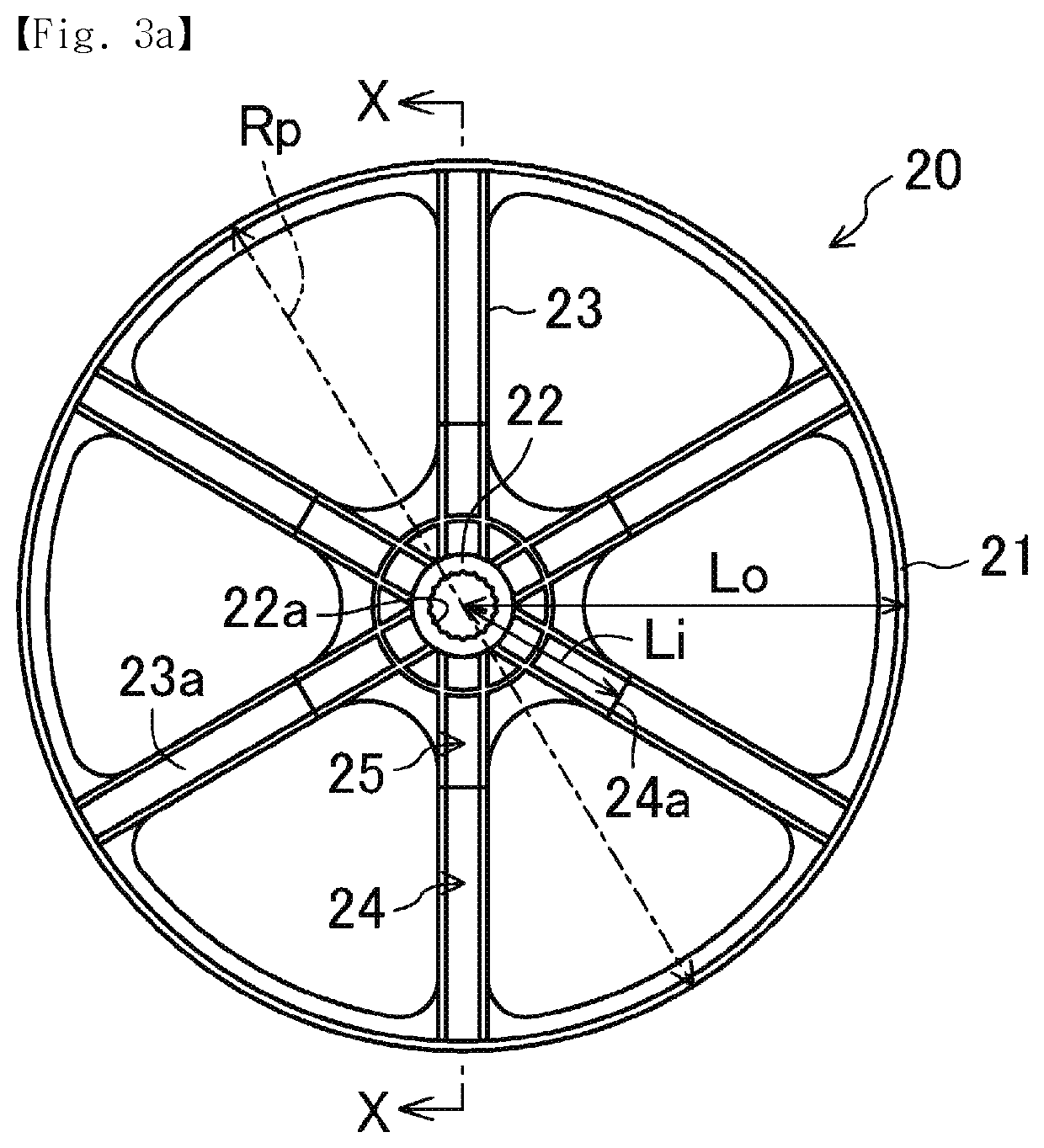Washing machine and pulley for washing machine
a technology for washing machines and pulleys, applied in mechanical equipment, gearing, hoisting equipment, etc., can solve the problems of increasing the cost of a member, the drum needs to be driven high, and the vibrations transferred to the drum may be reduced, so as to suppress the increase of noise, improve the rigidity of the pulley, and suppress the weight of the pulley from increasing
- Summary
- Abstract
- Description
- Claims
- Application Information
AI Technical Summary
Benefits of technology
Problems solved by technology
Method used
Image
Examples
first embodiment
[0063]When designing a drum pulley 20, an analysis for a structure of an arm 23 was performed by a finite element method (FEM). A model used in the analysis is shown in FIGS. 7A and 7B. FIG. 7A shows a conventional model (a reference example model M1), and FIG. 7B shows a model to which an embodiment of the present invention is applied (an embodiment model M2).
[0064]The reference example model M1 was provided to have a shape having a cross-section uniform from a base end (a portion connected to a boss 22) of the arm 23 to a front end (a portion connected to an outer wheel 21) of the arm 23, and the embodiment model M2 was provided to have a shape having a uniform cross-sectional portion 25 in a base end side of the arm 23, and a variable cross-sectional portion 24 in a front end side of the arm 23. A boundary between the uniform cross-sectional portion 25 and the variable cross-sectional portion 24 was provided to be 30 mm apart from the base end of the arm 23.
[0065]In this analysis...
second embodiment
[0072]In an analysis for the embodiment model M2, a relation between a proportion and rigidity of the variable cross-sectional portion 24 of the arm 23 was investigated. Specifically, a weight, a maximum width, and a length were the same as those in the first embodiment, and as shown in FIG. 3A, by varying a ratio Li / Lo (%) which is a ratio of a length Li from a center C to an end portion of the variable cross-sectional portion 24 located at the boss 22 (an end portion 24a adjacent to the boss), with respect to a length Lo from the center C to a periphery of the outer wheel 21, an optimum state in which a displacement amount of a front end of the arm 23 is minimized at each of the varied ratios Li / Lo was obtained. A result is shown in FIG. 10. Further, a vertical axis shows a displacement amount reduction rate of the front end (% with respect to the reference example model M1).
[0073]A displacement amount reduction effect was further found when the ratio Li / Lo became smaller (the uni...
third embodiment
[0074]Further, the influence on rigidity of the variable cross-sectional portion 24 according to a change amount of a height of the variable cross-sectional portion 24 was also investigated. Under conditions the same as the conditions in the second embodiment, at ratios Li / Lo of the variable cross-sectional portion 24 (30%, 50%, 70%), as shown in FIG. 7B, by varying a ratio Ho / Hi, which is a ratio of a height Ho of an end portion of the variable cross-sectional portion 24 located at the outer wheel 21 (an end portion 24b adjacent to an outer wheel), with respect to a height Hi of an end portion 24a adjacent to the boss, to greater than or equal to 30%, an optimum state in which a displacement amount of a front end of the arm 23 is minimized at each of the ratios Ho / Hi was obtained. A result is shown in FIG. 11. Further, like the second embodiment, a vertical axis shows a displacement amount reduction rate of the front end (% with respect to the reference example model M1).
[0075]A di...
PUM
 Login to View More
Login to View More Abstract
Description
Claims
Application Information
 Login to View More
Login to View More - R&D
- Intellectual Property
- Life Sciences
- Materials
- Tech Scout
- Unparalleled Data Quality
- Higher Quality Content
- 60% Fewer Hallucinations
Browse by: Latest US Patents, China's latest patents, Technical Efficacy Thesaurus, Application Domain, Technology Topic, Popular Technical Reports.
© 2025 PatSnap. All rights reserved.Legal|Privacy policy|Modern Slavery Act Transparency Statement|Sitemap|About US| Contact US: help@patsnap.com



